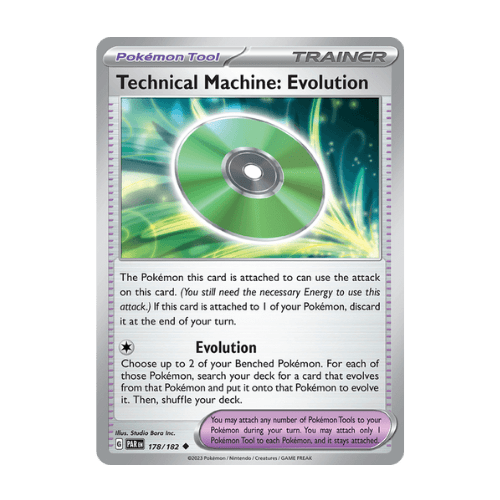Pokémon TCG evolution turns Basic Pokémon into stronger Stage 1 or Stage 2 versions by placing the new card on top. Evolving increases HP and unlocks new Attacks and Abilities. Master this mechanic to build better decks and win more battles.
This post may contain affiliate links. See our affiliate policy for more information.
Pokémon card battles are rarely won by sticking with Basics- you win by evolving into heavy hitters that dominate the board. But evolution comes with a unique set of rules that can confuse new players.
Let’s break down the Pokémon TCG evolution- what it is, how the rules work, and cards that help you evolve more efficiently.
Key Takeaways
- Evolution upgrades a Basic Pokémon into a stronger Stage 1 or Stage 2 version.
- Pokémon must evolve within their own evolution line and from Basic to Stage 1 to Stage 2- unless a specific card says otherwise.
- Pokémon can only evolve if they’ve been in play since the start of your turn (i.e. for one full turn)
- Evolving keeps Energy and damage but removes all Special Conditions and status effects.
- Skilled players use cards that break traditional evolution rules to accelerate setup.
What Is Evolution In Pokémon TCG?
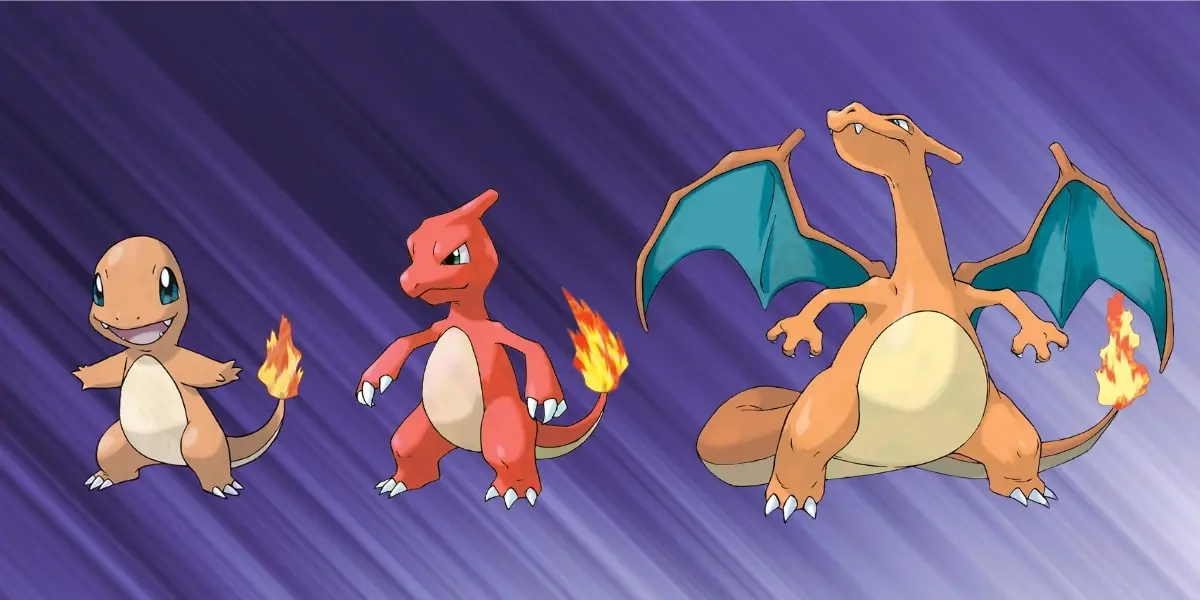
You’ll know the deal if you’re already a fan of the video games or anime- evolution is the act of upgrading a Pokémon into a more powerful version of itself.
In the Pokémon TCG, evolution works by placing a higher stage card, like Stage 1 or Stage 2, on top of its corresponding pre-evolution. For example, you can evolve Charmander → Charmeleon → Charizard ex.
All of the evolution stages for a given Pokémon are collectively known as its “evolution line” or “evolution chain”. As Pokémon move up their evolution line, they typically gain hit points, stronger attacks, and new abilities compared to their pre-evolved versions.
Furthermore, evolution cards are a core component in decks because they often have the most devastating attacks and Abilities that fuel your entire game strategy.
Stage 1 vs Stage 2 Evolutions
Not all evolutions are created equal. Stage 1 and Stage 2 Pokémon are both evolutions, but they play different roles in your deck. Knowing when and why to run them is important.
Main Attacker | Support Attacker |
High damage output | Lower damage output |
High HP | Lower HP |
Used to attack in the early-game | Used to attack in the mid to late-game |
3+ copies in deck | 1 to 3 copies in deck |
Stage 1 Pokémon are your quick evolutions. They’re easier to set up and often come with useful abilities and strong attacks. Stage 1 Pokémon can be your primary attackers or used as a stepping stone to get your Stage 2 Pokémon into play.
Stage 2 Pokémon are some of the most powerful cards in the game. They bring serious firepower and tankier hitpoints. But they also take more effort to get into play since they need to evolve from a Stage 1 first.
You can identify the evolution stage by looking at the text in the top-left corner of every Pokémon card.
Why Evolve Pokémon?
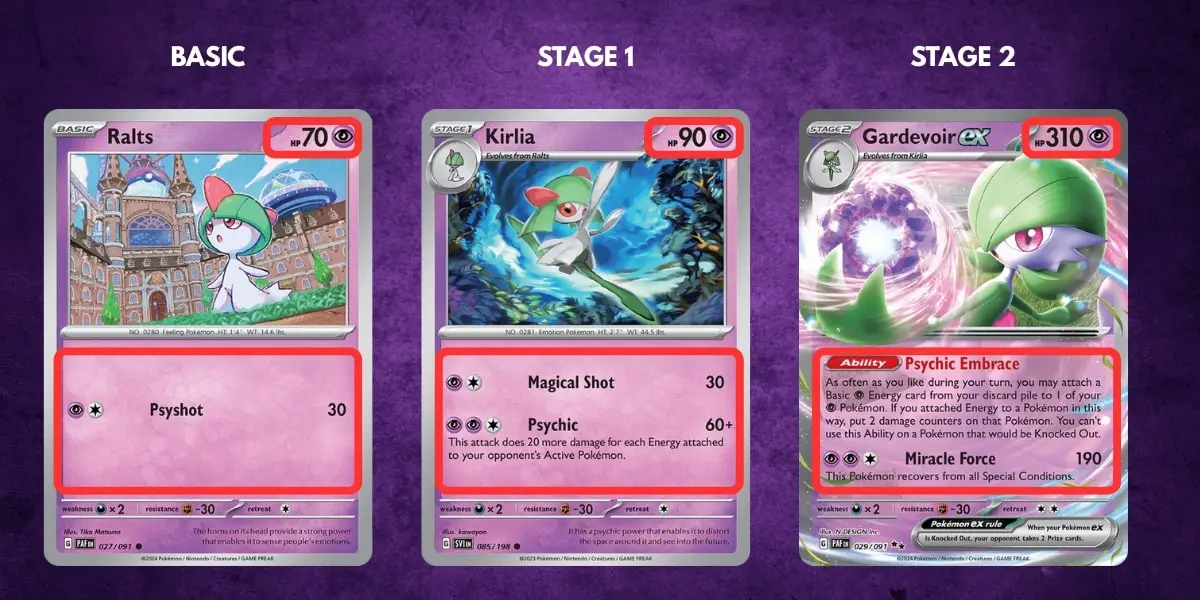
Basic Pokémon are cute, sure- but they’re rarely enough to win battles on their own. Evolving turns your team of lightweights into threats that can take knockouts, survive hits, and secure wins.
The main reasons for evolving in the Pokémon TCG:
- Increase HP and stay in the battle longer
- Increase damage output for taking knockouts.
- Gain access to new Abilities or attacks.
- Shake off Special Conditions like Poison or Confusion (they heal on evolution)
Evolving doesn’t just give you cooler-looking Pokémon. Stage 1 and Stage 2 cards are usually the centerpiece that your deck revolves around. For example, Gardevoir ex (SVI 086) is a key evolution card in many Psychic-type decks with its Psychic Embrace Ability which accelerates Psychic energy attachement.
Unless your deck is built around Basic Pokémon, you’ll need to start evolving early and evolve often throughout the battle.
Oh, it’s also friggin’ cool watching your squishy Basic turn into a tanky game-destroying behemoth.
How Pokémon TCG Evolution Works
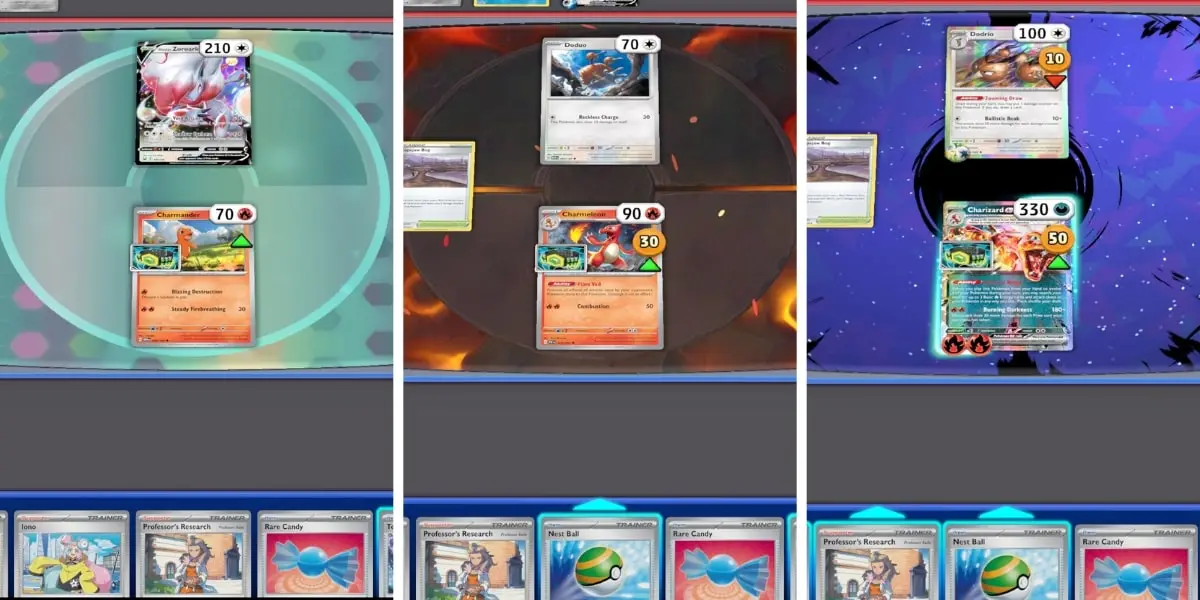
If you’re new to playing Pokémon cards, you’ll need to know how to evolve your Pokémon. Why? Because evolution is a fundamental game mechanic and deeply ingrained in competitive play.
So here’s how evolution works in a nutshell.
During your turn, you can evolve a Pokémon by placing the next Stage card directly on top of it- but only if that Pokémon has been on your field since the start of your turn. So if you just played a Basic this turn, you’ve got to wait until the next turn before that Pokémon can evolve.
Pretty simple right?
But before you start stacking Charizards onto your Charmanders like a madman, there are a few Pokémon TCG evolution rules you need to know.
10 Essential Rules For Evolving Pokémon

Here are the official Pokémon TCG evolution rules you need to follow to play the game correctly- and legally- in competitive tournaments.
Let’s get into it.
1. Pokémon Evolution Happens In Order
You go Basic → Stage 1 → Stage 2. No shortcuts unless a card like Rare Candy says otherwise.
Example:
You can’t evolve Charizard ex straight into Charmander. You need Charmeleon in between.
2. Pokémon Must Have Been In Play For At Least One Turn
You can’t evolve a Pokémon the same turn you play it. It needs to be in play since the start of your turn. This includes Pokémon you benched with Item cards like Buddy-Buddy Poffin.
Example:
If you bench Charmander on your current turn, it can’t evolve into Charizard until your next turn.
3. One Evolution Per Pokémon Per Turn
Since a newly evolved Pokémon is now technically “in play”, each Pokémon can only evolve once per turn (see rule 2).
The only exception to this rule is if another card, like Salvatore, says you can evolve a Pokémon that was played on the same turn. In this case, Pokémon can evolve twice in a turn.
Example:
Normally, evolving Charmander → Charmeleon → Charizard ex takes three turns minimum. First turn to get Charmander in play, second turn to evolve into Charmeleon, and third turn to evolve into Charizard.
4. No Limit On How Many Evolutions In A Turn
You can evolve as many different Pokémon as you want in a turn. There’s no cap- just make sure you follow all the other evolution rules.
Example:
Got two Charmanders and one Pidgey on your field? You can evolve all three if they’ve already been in play for a turn.
5. Pokémon Must Follow Their Evolution Line
Identify a Pokémon’s evolution line by looking at the “evolves from” description in the top-left corner of every Pokémon card. Basic Pokémon don’t evolve from anything (they’re the start of the evolution line).
Example:
Charizard ex “evolves from” Charmeleon, which “evolves from” Charmander (Basic).
6. Card Names Must Match The “Evolves From” Text
Cards don’t need to be from the same set to evolve. But the name of the pre-evolution must match identically to the name stated in the “Evolves from” text in the top-left corner of the evolution card.
Example:
Charizard ex can evolve from both Charmeleon (PAF 008) and Charmeleon (MEW 005) even though both Charmeleons are from different sets (Paradox Rift and Scarlet & Violet 151). They both have identical names and are therefore both viable in the Charizard ex evolution line.
This adds a layer of strategy when building your deck since you can choose different pre-evolutions to fit your strategy.
7. Both Active And Benched Pokémon Can Evolve
You can evolve a Pokémon in either the Active Spot or on the Bench. Just make sure it’s been around since the start of your turn.
8. Evolving Does Not Remove Attached Cards And Counters
Any attached Energy, Tools, and damage counters remain on a Pokémon after it’s evolved.
9. Evolving Does Remove Previous Attacks, Abilities, and Card Effects
A Pokémon can no longer use its old attacks and abilities after it evolves.
Lingering card effects are also cleared. For example, if a Charmeleon is affected by a Status Condition like Poison, the condition heals when it evolves into Charizard ex.
10. Always Follow Card Text Over The Rulebook
The Pokémon Company is constantly releasing new cards with unique effects that sometimes break the official rules. This injects new strategy into the game and keeps it exciting.
If a card says you can do something that contradicts the rulebook- always follow the card!
For example, a handful of Trainer cards in the current 2025 format allow you to break traditional evolution rules to evolve Pokémon faster.
Accelerating Pokémon Card Evolution

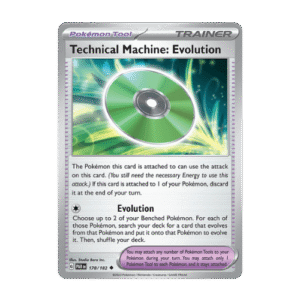

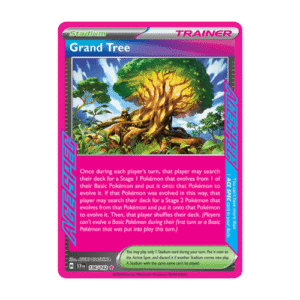

Today’s meta is fast-paced. Waiting two, three, or more turns to field your Stage 2 just won’t cut it. It’s too slow.
Thankfully, these cards get your evolution Pokémon in play faster.
1. Rare Candy
Rare Candy (SVI 191) is a staple Item card for decks that run Stage 2 evolutions. It allows you to evolve a Basic Pokémon directly into its corresponding Stage 2, bypassing the Stage 1. This accelerates your setup by saving a turn. However, the Basic Pokémon must have been in play since the start of your turn, and you can’t use Rare Candy during your first turn or on a Pokémon that was just played that turn.
2. TM: Evolution
Technical Machine: Evolution (PAR 178) is a Pokémon Tool card that lets you choose up to two of your Benched Pokémon and search your deck for a card that evolves from each of them, then place those cards onto the respective Pokémon to evolve them. Whilst TM: Evolution doesn’t allow you to evolve Pokémon on the same turn they were played, it does help you search for evolutions and get them in play faster.
3. Salvatore
Salvatore (TEF 160) is a Supporter card that lets you search your deck for a Pokémon without an Ability that evolves from one of your Pokémon in play and put it onto that Pokémon to evolve it. Notably, Salvatore allows you to evolve a Pokémon on the same turn that it was played.
4. Grand Tree
Grand Tree (SCR 136) is a Stadium card that allows you to search your deck for a Stage 1 Pokémon that evolves from one of your Basic Pokémon in play and put it onto that Pokémon to evolve it. Then you can search your deck again for a Stage 2 Pokémon that evolves from that Pokémon and put it onto that Pokémon to evolve it again.
This effectively allows your Pokémon to evolve twice in a single turn. However, you can’t use this effect on a Basic Pokémon that was put into play on the same turn.
5. Hyper Aroma
Hyper Aroma (TWM 152) is an ACE SPEC Item card that lets you search your deck for up to three Stage 1 evolutions and put them into your hand.
While it doesn’t directly evolve your Pokémon, it accelerates evolution by ensuring you have the necessary Stage 1 cards ready, reducing the chance of being stalled due to missing evolution pieces.
Conclusion
Pokémon TCG evolution is a core mechanic that’s all about powering up your Pokémon’s offenses and defenses. Understanding how to evolve is essential for playing the game properly. And if you’re ready to take things to the next level, try including evolution acceleration cards in your deck.
Power up and start hitting big!
FAQ
Kalam is a PTCG gameplay expert and content creator. He started playing and collecting Pokémon cards since 1996. When he’s not working, you can find him nerding out on Anime!
Ready To Level Up At PTCG?



